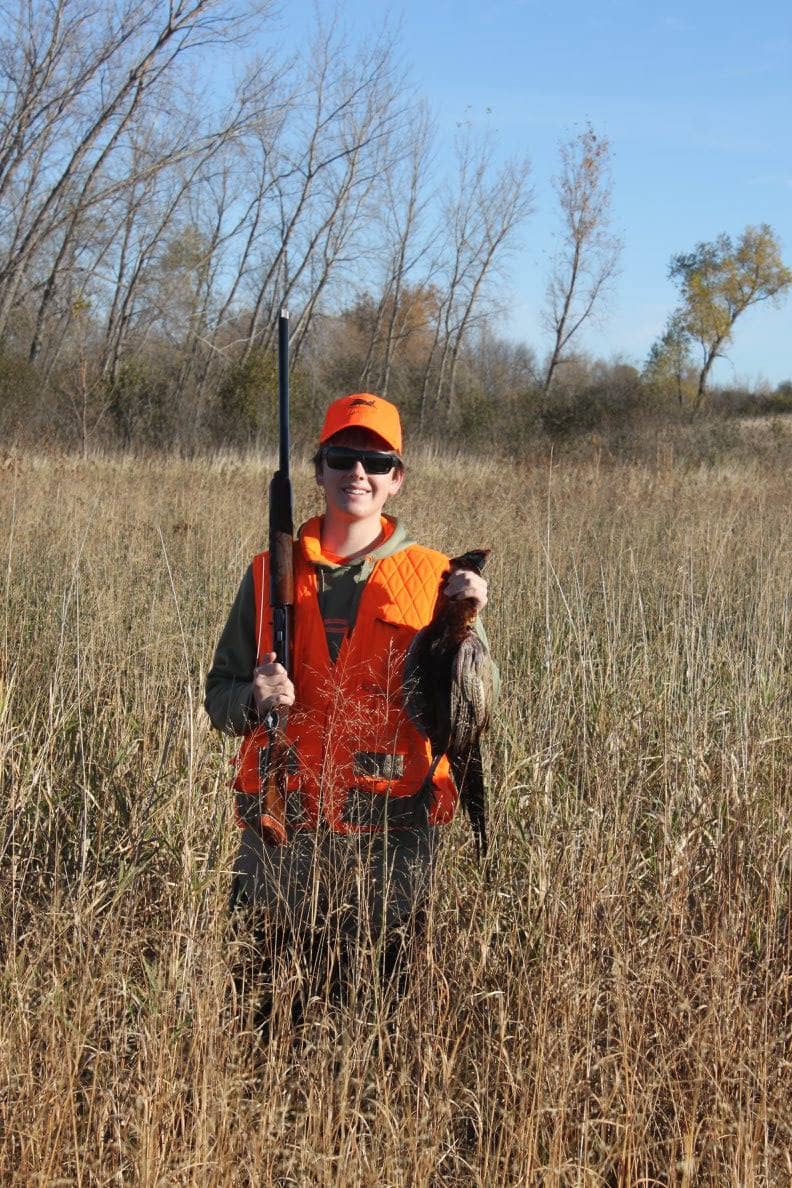
By Nick Simonson
This weekend’s youth pheasant season allows young hunters their first crack at upland success. As it requires adult hunters to be with them in the field and not carrying a shotgun, there’s no second guessing who gets the shot at a rising rooster during this special two-day stretch. Having participated in the earliest days of the youth pheasant season when it was created back in the mid-2000s and put together a number of mentored hunts for ringnecks since then, I’ve learned some tricks to help young hunters convert on their first upland birds. What follows are just a few tips to set the stage for success.
First and foremost, the hunt is about them and there are no stupid questions. I remember my first hunt, when I asked my uncle how to load the extra two shells in my pump shotgun, and I was 22 at the time. Since then, I’ve had new hunters ask me what the difference between a rooster and a hen is and even if they can shoot more than once at a bird. Remember, for many, this may be their first time out and they want to learn more. Take the time to answer them and explain with as much detail as possible to give them a full understanding of all the important elements, from employing the safety, setting up the shot, and how you and your dog will help find the bird afterward. In those moments of silence, or where you think something is important to point out, explain it directly and thoroughly, especially when it comes to safety, dog behavior and movement in the field. Also note where birds are likely to be in relation to food and cover, and what constitutes a safe, ethical shot. Keep the lines of communication open throughout the hunting experience and share your knowledge during it, whether it’s just a couple of hours in the morning, or all weekend long.
Next, lay out the ground rules. Discuss the area to be hunted, the likeliest spots where birds will be, and how you hope to set up a successful flush, shot and retrieve. Explain how your dog works, what signs of birdiness he or she gives off, and what to expect following a flush or a point. All dogs act differently, and many new hunters are behind one for the first time, so keep it specific to those canines leading the way. This also means pointing out that shooting at running birds (a/k/a “ground-pounding”) is forbidden for the safety of the dog, and even restricting shots only at birds rising on the front or sides if mentors are walking behind a young hunter, to keep people safe as well. Depending on the number of young hunters with you at the time, you may want to draw out an imaginary clock face and instruct them on where their shooting areas are, to keep shots from crossing and maximize individual opportunities.
Before starting out, double check all equipment to make sure it is in working and employable order. I’ve had more than a few young hunters show up to a mentored hunt with guns so rusted or dirty that their actions did not function properly, and even one that had a missing firing pin. Stress that shooters should be familiar with their firearm, that it be functioning both on the shot and while reloading, and maybe even give them a chance to fire it before the hunt with some trap, or targets launched from a thrower. Additionally, ensure that everyone has enough blaze orange to be seen and that it is fresh, bright and noticeable from a distance. It’s likely you have more than your fair share of blaze orange hats and caps, so pack a couple extra and maybe a spare vest to ensure everyone has the required safety orange to be seen in the field.
Finally, make sure everyone is comfortable when starting out and during the hunt. This may mean shedding layers of clothes if things warm up or adding them on if it’s a bit too chilly. Some kids might be used to walking two or three miles, others maybe two or three blocks. Make note of each kid’s physical stamina and attitude as the hunt goes on and know when to say when. The last thing anyone wants is a bad experience for a new hunter, so call it quits when necessary and suggest another time to meet up and head back out in the future. That also helps ensure that the process is not a one-and-done scenario, but a long-term mentored process that will continue until the student is ready to head out on his or her own in the future.
Keep these things in mind during this weekend’s youth pheasant season and any time you invite a young or first-time hunter out into the field. By keeping open communications, stressing safety and good care of equipment and knowing the limits of your companions, you’ll pull off a great mentored hunt regardless of whether the new hunter limits out, comes up empty, or even fires a shot.
